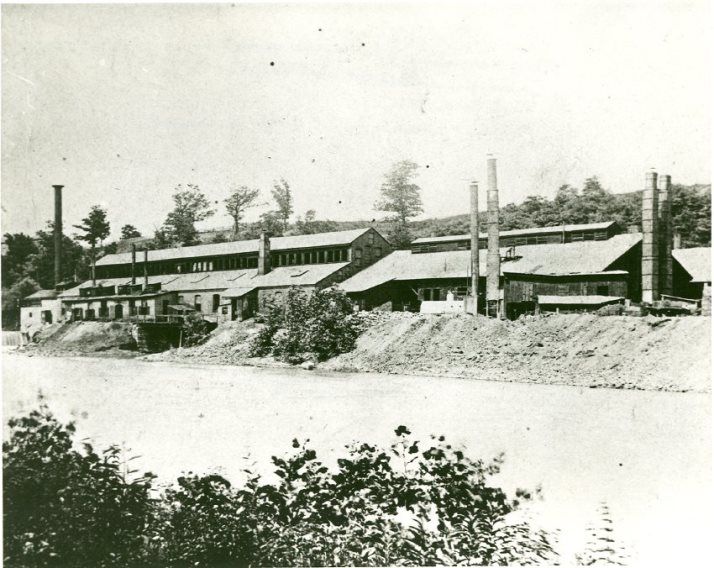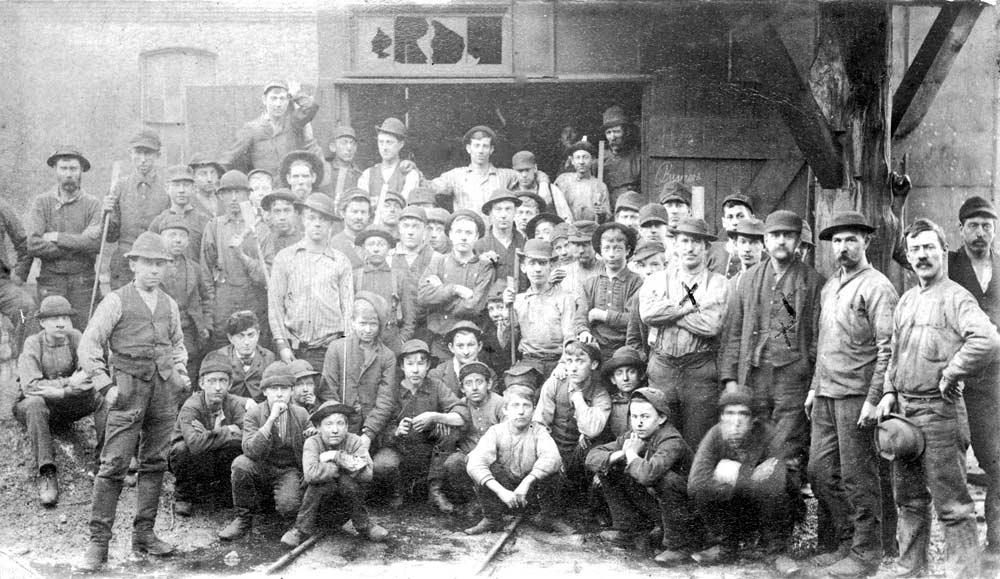While other mills served their local community and if successful, exported some of their products, this nail manufactory in East Pennsboro Township became one of the largest of its kind in the United States. In the early 1830s, a metal rolling mill was erected by Gabriel Hiester and Norman Callender of Harrisburg. They produced boiler plate and bar iron at this mill, named the “Fairview Rolling Mills.” By 1838, the owners had added a nail factory, and by 1841, they had slitting machinery to prepare iron bars for nail manufacturing.1
The operation was purchased in 1842 by Jared Pratt, who already owned the New Cumberland forge built by Jacob Haldeman. Pratt moved his New Cumberland business to the Nail Works and added bloomeries, a forge, and a stove mill to the property.2 Three years after the purchase the mill burned, but Pratt rebuilt and focused on creating a productive nail factory. By 1850, it produced about 30 thousand kegs of nails yearly and employed 125 men.3
Pratt sold the works in 1859 to James McCormick, who named it the Harrisburg Nail Works. By 1860, the factory, with approximately the same number of workers it had a decade before, had doubled its output.4 McCormick built a large brick mill in 1862 and added other buildings to house a puddling furnace, blacksmith shop, plate mill, brick office, cooperage, stove shed, and warehouses. The factory burned in 1863, but was quickly rebuilt in brick. At its peak, the nail factory had 83 nail machines, four heating furnaces and 10 puddling furnaces for refining iron. About 400 workers were employed and it was one of the largest nail mills in the United States. West Fairview resident and historian Warren B. Smith remembered several of the employees:
In charge of the mill office was J. P. Wilbur, with Joseph and John Spong employed as clerks. C. B. Bryston was Superintendent and his assistant was Fred Kilheffer. John Sheetz was Iron Master, Hiram Dunbar, boss of the nail factory; Jacob A. Smith and his son Jacob H. (my father) were in charge of the plate mill; J. P. Wilbur managed the copper shop and George Shutt was in charge of the packers. There was a narrow gauge rail line connecting the factory with the warehouse and William Porter handled the three-mule-power team that dragged the little cars between the buildings. Charles Watkins was the warehouseman. The wooden kegs for the nails were manufactured by H. M. Rupley and Frank Martin who had a saw mill established 1831and keg factory nearby.
The factory workers even formed their own band in 1876.5 Daniel Drawbaugh, local inventor of telephone fame, patented improvements for the nail machines in 1865 and 1867, and his changes were put to work in this mill. By 1870 the rolling mills were running on steam machinery, although the nails were still being produced by water power.6 Several steam-powered saw mills in the area supplied the nail works and provided construction materials for workers’ homes.7
The booming demand for cut nails did not last into the twentieth century. When the wire nail was invented in the late 1800s, it was the beginning of the end for the Harrisburg Nail Works. The nail mill permanently closed in 1898 and was dismantled by 1911.8 In 1942, the land was transferred to the Borough of West Fairview for $100.9 Only a few sturdy brick arches remain along the creek. A small museum dedicated to the nail works is in Adams-Ricci Park in East Pennsboro Township, maintained by the Historical Society of East Pennsboro.10


